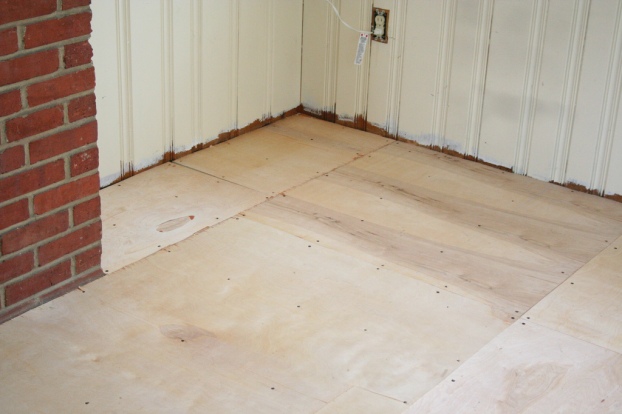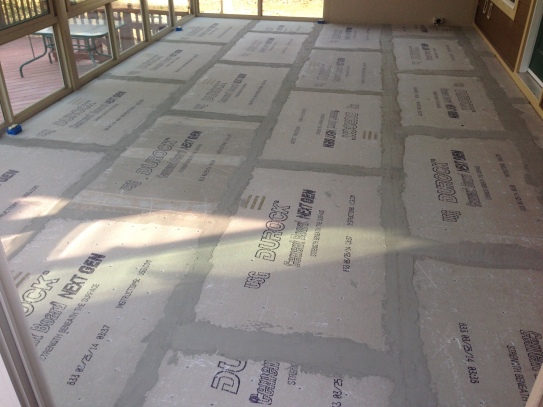Flooring underlayment is used between the subfloor sheathing and and the finish floor material to provide a smooth surface for finish floor and gives the overall floor assembly more stability and structural integrity. Underlayment is sometimes not required or needed in new construction as the subfloor is smooth and installed with new finish materials. Underlayment can be one of the following materials:
Plywood – Typically 1/4″ to 1/2″ AC grade for dry finish flooring materials like laminate, hardwood, vinyl, and engineered wood.

Cement Board – Typically 1/4″ to 1/2″ and is geared more towards moisture permeable and susceptible locations and finish materials like tile and stone.


Luan – Commonly 1/4″ and is typically used for vinyl flooring in an area where the existing subfloor is not smooth enough for finish floor applications.

Cork – Generally ranges anywhere from 2mm to 1/2″ and is available in sheets or rolls. Cork underlayment is a great sound reduction/absorbing material and is commonly used with wood flooring, vinyl flooring, hardwood, laminate, linoleum, and rubber sheet flooring. 3mm to 1/2″ cork underlayment is typically utilized on glued-down or floating engineered hardwood and laminate floors. Thicker cork underlayment (10mm – 1/2″) is used more commonly for sheet flooring and vinyl tile/plank. Cork underlayment is commonly glued down but may also be flaoting.
